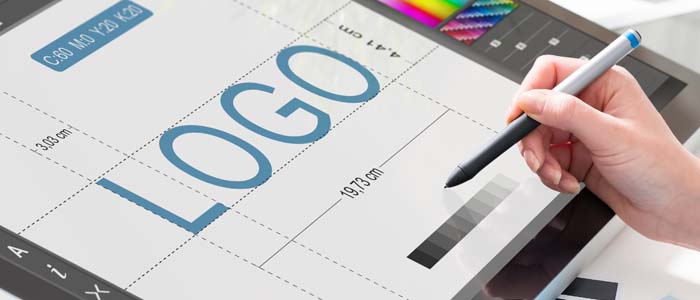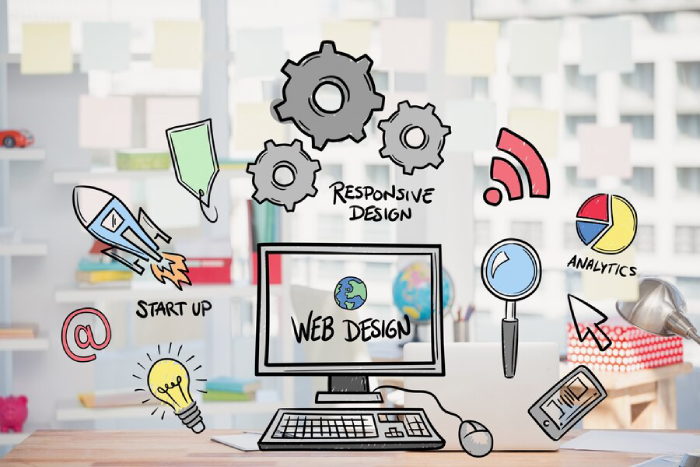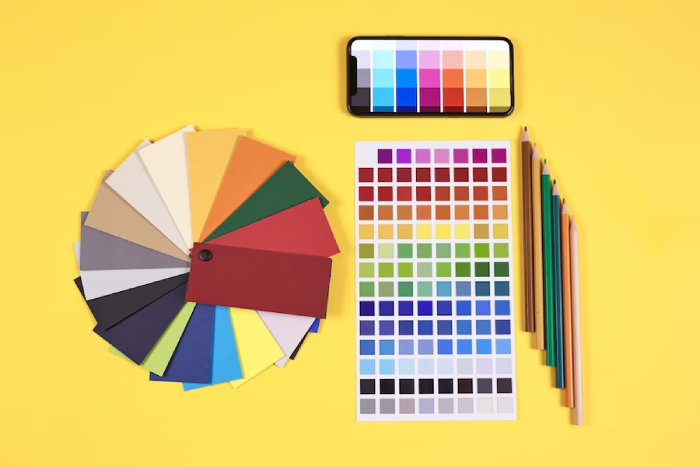Have you at any point seen a well-known brand without a business logo? No? That is because there can not be any.
A business logo significantly affects how your clients will see your image. Generally, you need your logo to be extraordinary. But, how do you do that?
You need to plan a logo for your organization or association. Your first approach should be to hire a professional graphic designer or a logo designer to get what you need for your business to compete in the market.
If you’re not opting to hire a professional for simple logo design, you can follow our blog post. It includes tips on “how to design a logo.” So, without any further ado, let’s begin.
To create an effective logo, follow these steps.
- Learn why design is so important
- Choose the design style that defines your vision
- Research your design
- Look at the opposition
- Focus on color
- Choose the correct type of logo
- Clarify your responsibilities with your designer
- Consider your logo options
- What not to do when designing a logo
- Include your logo design in your branding
Learn why design is so important
First impressions matter a lot when it comes to your company’s business logo: It gives customers a sense of who you are and allows them to determine whether they will enjoy your business.
In addition to visually communicating what you stand for, a great yet simple logo design can also increase your brand recognition. In addition to making a well first impression, it will also help you stand out from your competitors
Choose the design style that defines your vision.
Your business logo should convey your brand personality. To do that, you must first understand what your brand core personality is. By knowing how your brand stands out and how it is different, you can make more informed decisions about design features to complement and complete the image.
Take a look at the following questions to discover your brand identity. It will help in elevating your simple logo design.
- What was the reason we began our business?
- What is the mission and vision that make up what we stand for as a company?
- What makes us unique?
- If you were to describe our brand in three words, what words would you use?
- What would we like our customers to say about us in three words?
Research your design
The research for inspiration can be the most challenging part of the simple logo design process. You only need to think like your audience and then write down a list of words that describe your brand and how you want it to be perceived. Always consider what is essential to people in your target audience.
Look at your competition.
Where can you borrow ideas for simple logos? Your competition! Consider what is already out there, what will appeal to your audience, and what you need to avoid. Learn why you should incorporate those differences into your logo design and what makes those other companies different from you.
Stand out from your competition by clearly stating who you are. If everyone in your industry is making simple logos in monochrome, you might want to use some color to make yourself stand out. A fun and modern logo may be the key to attracting attention if everyone else is traditional.
Focus on color
After developing your brand identity and feeling inspired, it is time for you to translate it into the design. You may be able to stand out from the crowd by designing a fun and innovative logo. In addition to adding depth to your simple logo design, color selections can also reflect your brand values and personality. A brand identity should depend on this psychology of colors. A thoughtful design palette can convey a deep understanding of your values and evoke specific responses.
Choose the correct type of logo.
From colors to graphics to typography, there are a lot of different elements involved here. To make sure you design a logo that best suits your business, you should become familiar with the following seven types:
- Pictorial marks
- Letter marks
- Emblem
- Wordmark
- Abstract logo marks
- Combination mark
- Mascots
Pictorial marks
When we hear the word logo, we usually think of pictorial marks and logo symbols. Your brand can easily be recognizable by an iconographic image that is easily recognizable. Create a design that represents your brand well, and make sure it remains simple or complex at the same time.
Letter marks
Especially if you have a long or difficult-to-remember name for your company, letter mark logos can help streamline your logo. Many companies like HP, CNN, and H&M use their initials for branding. Although monograms can look great for minimalist logos, they are less effective at translating your company values.
Emblem
It is possible to incorporate words into emblem logos. In addition to emblems, crests are a long-standing tradition that communicates tradition and prestige.
Wordmark
The company or organization name represents front and center instead of a graphic symbol for some brands. When it comes to typography, everything counts. No matter what font you choose, it must be legible.
Abstract logo marks
Abstract logos are usually more geometric and less recognizable. Their uniqueness makes them ideal for brands that want to stand out from the crowd. In the beginning, we strongly advise combining these symbols with your company or organization name until your company or organization has established enough brand recognition to allow you to use your branding alone.
Combination mark
As we are all familiar, a logo lock-up is the traditional logo that combines a symbol and wordmark. You can move the elements around until you find a layout you like. Depending on the context, they may collaborate differently; we will discuss this in the Define phase.
Mascot
A mascot may be fun for your brand, depending on its personality. As a bonus, they can be used in different contexts and have more expressions than your standard symbol. If you want to communicate an emotion or message, ensure your language aligns with it. Choosing mascots is not the best idea if you prefer a business-like feel.
Clarify your responsibilities with your designer
Be open to suggestions and stay open to your designer’s advice, even when it’s hard to trust them. Having a great designer on your side who understands what makes an outstanding logo is essential. The best way to let designers know what you like is to give detailed, clear feedback. You and your designer should work together to come up with the best design.
Consider your logo options.
Choosing a logo can be challenging, which is why it is advisable to ask for feedback from friends, potential customers, and co-workers.
What not to do when designing a logo
If you’re creating a logo, you’ll encounter a few common pitfalls. The following list will help you avoid making these mistakes.
- Don’t be swayed by clichés in your field. Is it necessary for your logo to have a tooth since you’re a dentist? No way. Do not use generic logos.
- Be as simple as possible. For an easy-to-remember logo (and printable one), simplicity is essential.
- Keep your style straightforward and classic. If you want your logo to look current in three years, follow the trends.
- If you want to save a few bucks, do not skimp on the logo quality. You usually get what you pay for when it comes to your logo.
Include your logo design in your branding
What comes next after you design your logo?
After you establish your logo, all branding materials for your business will flow from it, including business cards, packaging, and website design. Having a logo that defines your style, color palette, font, and overall look will help your designer create a seamless look for all your brand collateral. In no time at all, your company will present a brand new image to the world.
Hire LogoVent’s professional logo designer
It can be tricky to design a communicative logo by yourself. Then, you will look out for a professional graphic designer to incorporate your business origin in the logo. When you hire a professional LogoVent graphic designer, you will be achieving the maximum logo design results that your brand deserves to appear as a Brand in the marketplace.
Also, you get what you pay for, and we need you to have the best.


